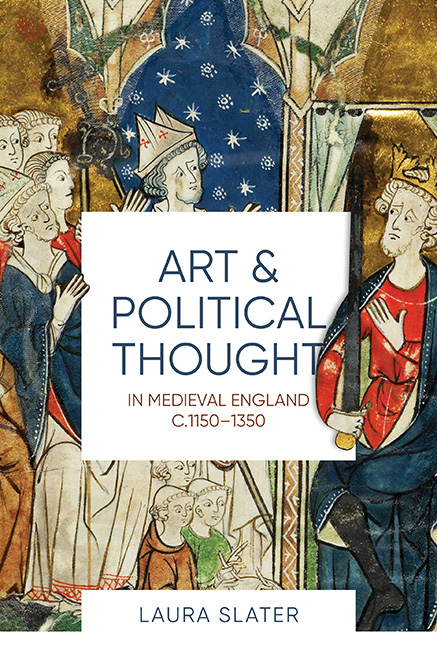Book contents
- Frontmatter
- Dedication
- Contents
- List of Illustrations
- Acknowledgements
- Abbreviations
- Introduction
- 1 Imagining Power in Angevin England
- 2 From the Clerics to the Court, c. 1200–1250
- 3 The Barons’ War and the Dreams of Reformers
- 4 Visions of Government during the Three Edwards
- Conclusion
- Bibliography
- Index
- Already Published
2 - From the Clerics to the Court, c. 1200–1250
Published online by Cambridge University Press: 26 July 2019
- Frontmatter
- Dedication
- Contents
- List of Illustrations
- Acknowledgements
- Abbreviations
- Introduction
- 1 Imagining Power in Angevin England
- 2 From the Clerics to the Court, c. 1200–1250
- 3 The Barons’ War and the Dreams of Reformers
- 4 Visions of Government during the Three Edwards
- Conclusion
- Bibliography
- Index
- Already Published
Summary
In the previous chapter, I examined the role played by visual images in advancing and exploring the political ideas elaborated by a circle of Canterbury-connected clerical curiales. Visual images helped articulate Augustinian arguments for prayer and divine deliverance from tyranny. Visual images expressed and supported a distinctively clerical vision of secular power, grounded in biblical verse, sacred example and a search for transcendent moral or allegorical theological meaning. The competition for royal favour at court, the frivolities of courtiers, the procedures of the exchequer, or the lives and histories of the kings of England since the Norman Conquest were all positioned in the context of a much greater individual and collective struggle for Christian virtue, liberty, peace and salvation. Both literally and metaphorically, the hope was that fresh water, ripe fruits and blossoming flowers would replace thorns and stony ground.
Although circulated to a potentially wide audience through institutional seals, or imagery encountered in the context of pilgrimage to Canterbury and the cult of Thomas Becket, these themes of English political thought and debate developed within relatively restricted circles: the courtierclerics and bureaucrats working in royal service and for the archbishops of Canterbury, or monastic members of Christ Church priory viewing the cathedral's typological windows, Utrecht Psalter and Little Canterbury Psalter. In this chapter, I will explore evidence for the absorption of these ideas into the everyday language of medieval English politics, and their wider communication in more public forms of art. I will then examine how the arguments of Angevin curiales were transformed, especially during the civil wars of 1215–17. From the early thirteenth century onwards, political struggle was characterised in England as a form of holy warfare, and surrounded by active exhortations to crusade, rebellion and resistance. Secular as well as clerical political actors applied the evangelising and crusading discourses of a reformist Church militant to contemporary events. In the process, some of the basic visual tropes of English political thought discussed previously, the biblically inspired literary and pictorial rhetoric of trampled enemies, flourishing virtue and barren ‘thorny ones’, were reimagined in new and remarkable ways. Images remained a constant of English political expression, but the ideas that they helped communicate did not.
- Type
- Chapter
- Information
- Art and Political Thought in Medieval England, c.1150–1350 , pp. 60 - 114Publisher: Boydell & BrewerPrint publication year: 2018



